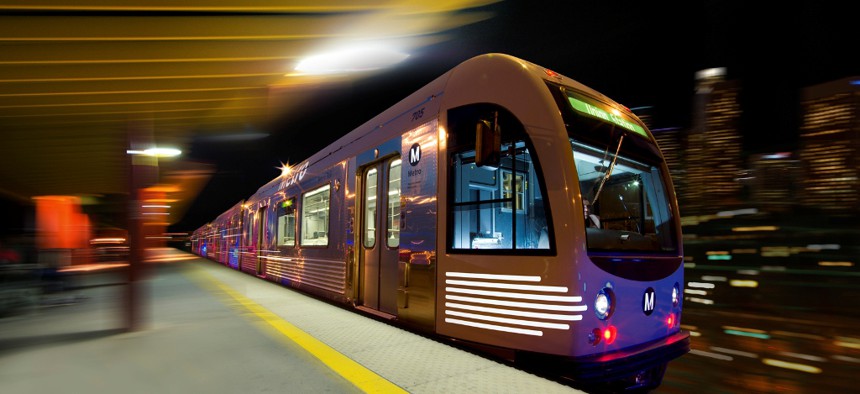Transit Projects Shouldn't Take Longer to Finish in 2014 Than They Did in 1925

Flickr user metrolibraryarchive

Connecting state and local government leaders
Here are a few ways to make sure they don't.
In July, the Los Angeles Metro reportedly gave contractors a "notice to proceed"with the county's latest rail project—a 1.9-mile light rail tunnel known as the Regional Connector. By joining several existing lines in Downtown Los Angeles, the connector will reduce transfers, improve travel times, and (officials hope) increase ridership. Conceived decades ago, the project entered serious planning in 2004, and the connector is scheduled to begin service in 2020.
Compare this project timeline with that of the so-called Hollywood Subway, which opened downtown back in 1925. Planning for this tunnel, not quite a mile long, took about a year. Construction took roughly 18 months. Even before factoring in the huge cost disparity between the projects—the Hollywood Subway came to roughly $47.4 million in 2014 dollars; the regional connector is estimated at $751 million per mile—the difference in completion time alone is astounding.
Ethan Elkind of UCLA, author of Railtown: The Fight for the Los Angeles Metro Rail and the Future of the City, draws this comparison in a new policy paperemphasizing the need to speed up transit planning and construction. Though Elkind focuses on California, his advice could double as national advice. It's not hard to imagine this complaint (from a San Francisco Chronicle op-ed summarizing Elkind's paper) echoed in other U.S. states and metros:
We're told relief is on the way, from new rapid-bus and rail-transit lines to high-speed rail. But unless "decades from now" is your idea of right around the corner, Californians have to exercise extreme patience waiting through the interminable planning and construction processes associated with major new transit projects.
Not every modern transit project takes longer than one from a century ago, of course, and there are plenty of acceptable explanations for those that do. Construction technology is better today, but there are far more people, buildings, and interests to navigate. At their best, planning processes and environmental reviews both protect and involve the public in the projects that will affect the place they call home.
That doesn't mean we can't do much better. Elkind suggests exempting transit projects from excessive environmental review since they are, by nature, beneficial to the environment. As we reported in July, California is in the midst of updating its environmental law to do just that, with the latest update released last week. The change will expedite the review process for projects that take cars off the road, such as BRT in San Francisco.
Meanwhile, the federal government wants to speed up the planning-to-completion timeline for transit, too. In a virtual town hall last week, DOT Secretary Anthony Foxx urged lawmakers (multiple times) to help reduce delay for major infrastructure projects. Some means to achieving this end—conducting concurrent rather than sequential review, for instance, and eliminating duplicative processes—were outlined in the Grow America act that Foxx recently sent to Congress.
Such calls are a step in the right direction (if not exactly new), but local planners don't need to wait for state or federal governments to reduce project delay. By harnessing data analytics and borrowing the concept of "lean production" from the tech industry, local planners and officials can implement and improve small projects on the fly—from better bus queues to smarter street designs. The mindset can shift from years to months, days, or even hours.
As Elkind points out, transit projects are not uniquely vulnerable to delay, but the limited funding available to them, and the wide social benefits they provide, makes efficiency and urgency a true necessity. Clearly, there are avenues of improvement open to all levels of government. It's up to officials to recognize them, as quickly as possible.
(Image via Flickr user metrolibraryarchive)
NEXT STORY: Cities, States Face Off On Municipal Broadband




